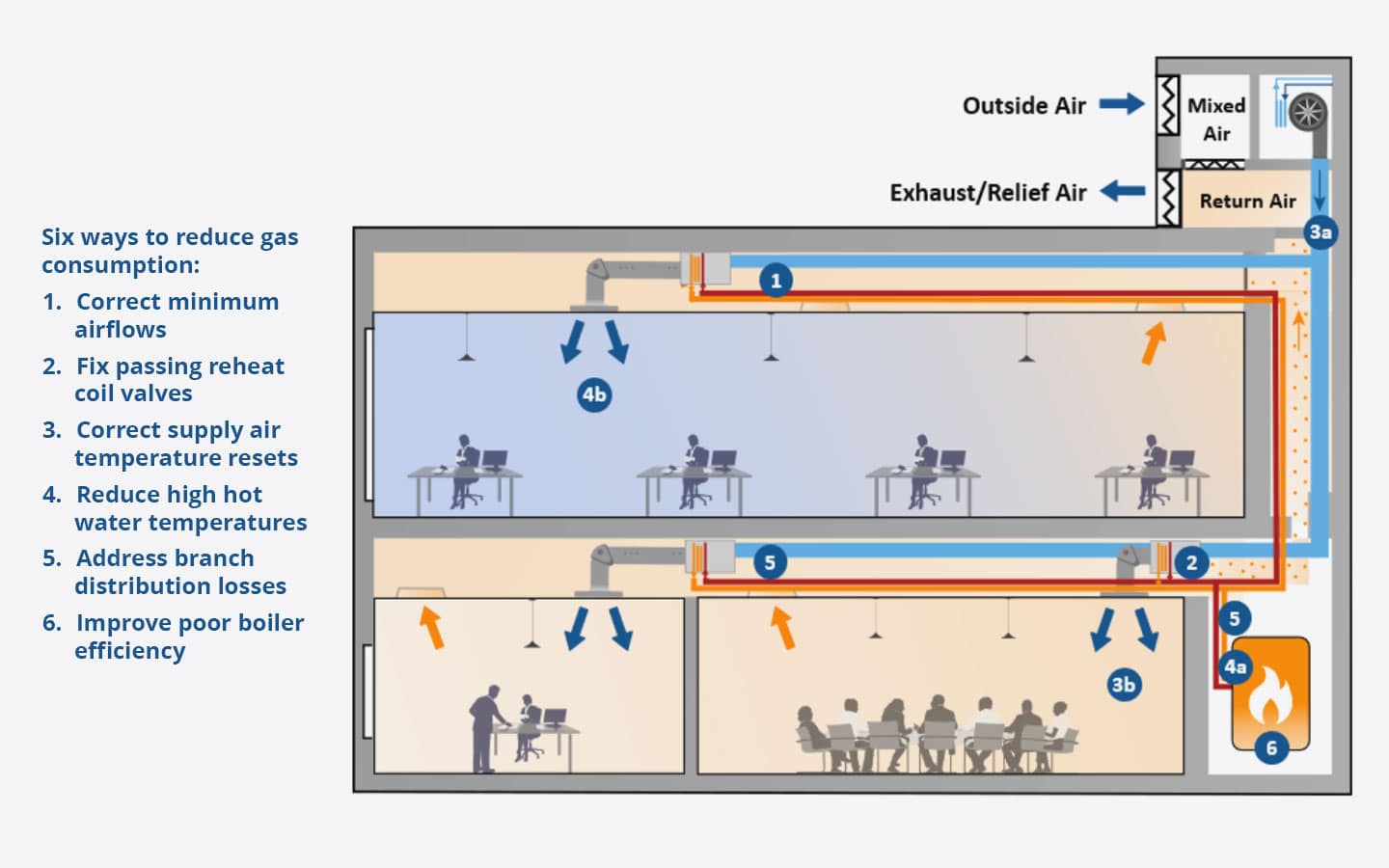Energy Use in Buildings
Reducing Gas Consumption in Existing Large Commercial Buildings
Natural gas combustion to serve space heating hot water systems causes approximately one-third of large commercial building energy use in California. This project evaluated an innovative set of non-proprietary, cost-effective methods to reduce energy consumption and associated emissions from these systems. By focusing on deep efficiency measures rather than wholesale system replacements, the project offers a scalable and accessible solution to a pressing environmental challenge, adding a valuable tool to California’s emissions reduction strategies toolkit.
The research team introduced a method called “Deep Decarbonization re-Design” to solve three main problems: reducing heating demand, reducing distribution losses, and correcting equipment sizing. Crucially, these measures aimed to decarbonize water heating systems without entirely replacing them. The project demonstrated 70% natural gas savings and substantial electricity savings in two large office buildings, yielding total utility cost savings of approximately $110,000 (or $0.5/ft²) per year. The project also conducted detailed studies in distribution losses and boiler efficiency in several buildings; measured performance of key components in laboratory tests; gathered and analyzed data from hundreds of buildings to evaluate actual performance of these systems; and provided a public dataset to inform future retrofits, research, and code development.
The research also highlighted characteristics that make a building a good candidate for retrofit so these results can be scaled. Market transformation activities included 10 journal and conference publications, policy recommendations and a design guide. These findings present a major opportunity for reducing costs and greenhouse gas emissions in existing large commercial buildings across the country. The resources provided by this project can aid policymakers in achieving California’s goals to decarbonize buildings.

